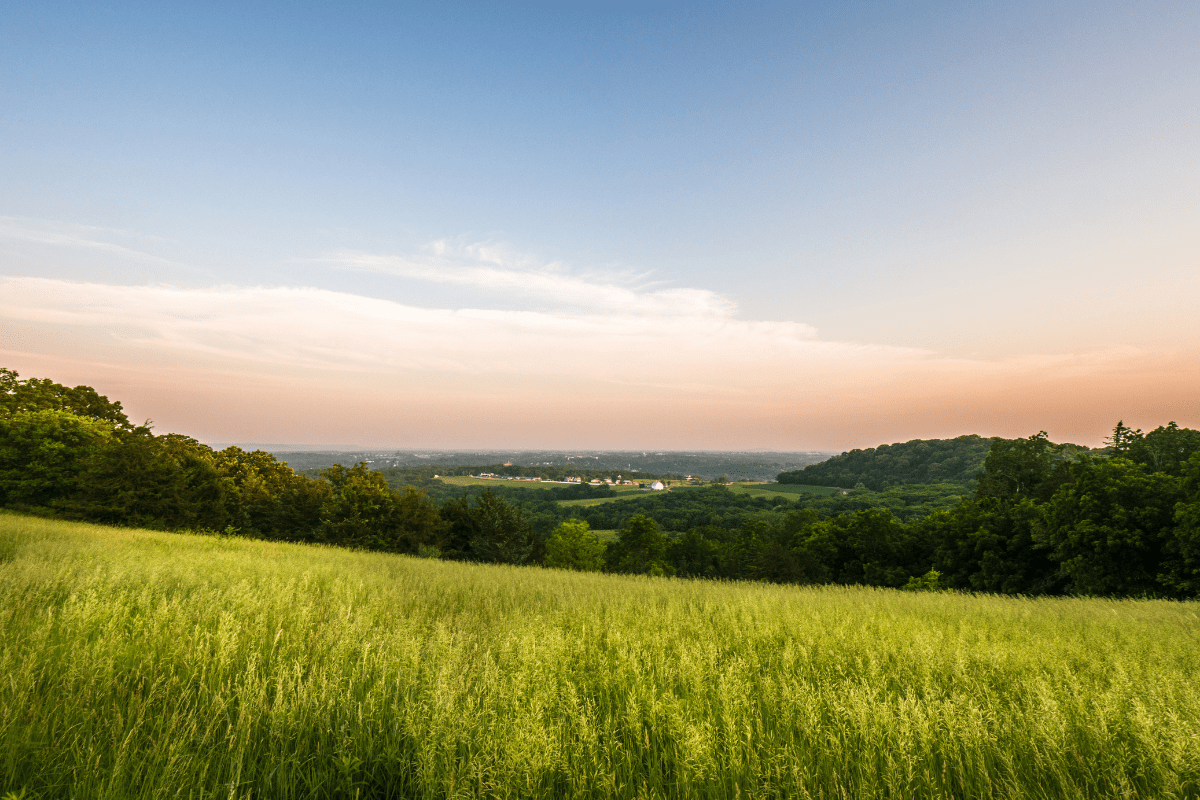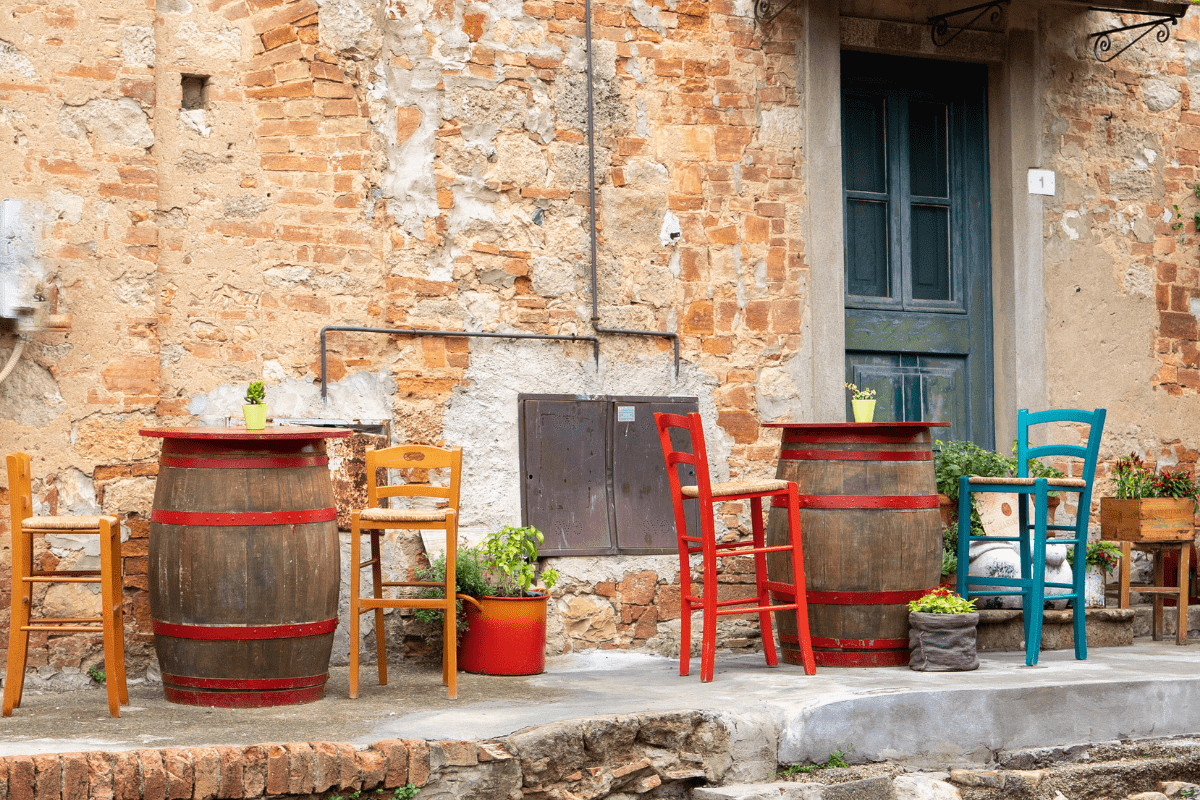Beyond Chicago's skyscrapers lies an Illinois that time forgot… or maybe just politely ignored. These eight small towns serve up everything from Swedish utopias to Amish buffets, proving that sometimes the best adventures happen when you deliberately get lost in the middle of nowhere.
The unexpected charm of Illinois's forgotten corners
Illinois recorded 112 million visitors in 2023, but most never venture past Chicago's city limits. That's their loss, honestly. While they're fighting for reservations at trendy Loop restaurants, you could be eating homemade pie in a town where the biggest traffic jam involves a horse and buggy.
These aren't your typical tourist traps with overpriced fudge shops and "ye olde" everything. These are real places where people actually live, work, and occasionally wonder why tourists keep showing up to photograph their post office.
What makes a small town worth the drive?
Let's be real: driving three hours to see a town of 600 people requires some convincing. But these places offer something you can't find in Chicago or even most suburbs… authenticity that hasn't been focus-grouped to death.
You want specific reasons? Here's what makes these towns special:
- Historic preservation without the Disney treatment
- Local restaurants serving actual local food
- Festivals that townspeople attend (not just tolerate)
- Architecture you can photograph without permits
- Stories worth telling at dinner parties
Galena: The town that refuses to modernize
Getting oriented in Illinois's time capsule
Galena sits dramatically between limestone bluffs in Illinois's northwest corner, looking more like a European village than anything you'd expect in the Midwest. With a population of just 3,200, this former lead mining boomtown once rivaled Chicago in importance. Hard to believe now, but in 1828, Galena boasted 14,000 residents while Chicago was still figuring out how to drain its swamps.
Today, 85% of Galena's buildings are on the National Register of Historic Places. That's not a typo. Nearly the entire town is historically significant, which explains why walking down Main Street feels like stepping into a particularly well-preserved history textbook.
The Main Street situation
The six-block Historic Main Street anchors everything. Here's the kicker: all 125 shops and restaurants are independently owned. No chains, no franchises, no Starbucks. The city council actually banned chain stores to preserve the town's character. Bless their stubborn hearts.
President Grant's Italianate mansion draws Civil War buffs, while the underground Vinegar Hill Lead Mine shows off the source of all that 19th-century wealth. Fun fact: nine Civil War generals called Galena home, making it America's most concentrated source of Union military leadership per capita. Take that, West Point.
The practical stuff nobody tells you
Getting to Galena requires commitment. It's 164 miles from Chicago via Highway 20, which takes about three hours if you don't stop. You will stop. The route passes through charming towns and scenic overlooks that demand photos.
Budget-wise, expect to spend $150-250 daily for a decent experience:
- Historic hotels: $180-280/night
- Dinner at Fritz & Frites: $25-40/person
- Parking: Actually free (small town perks)
- Wine tasting: $15-25
- Shopping damage: Your problem
Visit during the Great Galena Balloon Race in June or the Halloween Parade in October, which somehow attracts 30,000+ visitors to a town of 3,200. The math doesn't add up, but neither does Galena's ability to avoid modernization, so just go with it.
Woodstock: Yes, the Groundhog Day one
More than just Bill Murray references
Woodstock earned Hollywood immortality as the filming location for "Groundhog Day," but this McHenry County charmer (population 25,500) offers plenty beyond movie nostalgia. The entire downtown square sits on the National Register of Historic Places, anchored by the 1889 Woodstock Opera House where Orson Welles started his career. No pressure, local theater kids.
Just 51 miles northwest of Chicago with Metra train access, Woodstock works perfectly for day trips or weekend escapes. The Victorian architecture surrounding the square creates Instagram gold, while the renovated Old Courthouse houses restaurants that don't require you to mortgage your house for brunch.
When Groundhog Day becomes real life
The town goes wonderfully bonkers during February's Groundhog Days Festival. International visitors actually fly in for this. The schedule includes:
- Walking tours of filming locations
- "Groundhog Day" movie screenings
- Pub crawls (because why not)
- Live groundhog prognostication at 7 AM
- Dance parties nobody asked for
Hotels average $70-150 nightly, making Woodstock surprisingly affordable. Dining runs $8-25 per entrée, depending on whether you're eating at the diner where Bill Murray learned to love or somewhere fancier.
Local tip: explore the Victorian homes around the square. Most tourists stick to Main Street, missing the architectural gems on the side streets. The locals won't mind… they're used to confused tourists asking where Bill Murray stayed.
Nauvoo: Where history gets complicated
America's most dramatic religious story
Nauvoo tells a story most Americans vaguely remember from high school history. Founded in 1839 by Joseph Smith Jr., this Mississippi River town briefly became Illinois's largest city with 12,000 Mormon residents. Then things went sideways. Smith died, the Mormons left in 1846, and Nauvoo shrank to today's 950 residents.
The rebuilt Nauvoo Temple dominates the skyline with its 165-foot steeple. Over 40 restored historic buildings offer free tours with costumed interpreters demonstrating blacksmithing, baking, and other 19th-century skills. It's like Colonial Williamsburg, but with more complicated theology.
Eating and sleeping in a former utopia
Located 212 miles from Chicago and 146 miles from St. Louis, Nauvoo requires dedication. Your efforts get rewarded with surprisingly affordable experiences. Most attractions operate free of charge, making daily costs reasonable at $121-295 including accommodation.
Hotel Nauvoo's dinner buffet has achieved regional legend status. For $25-30, you get Southern fried chicken, a 20-foot salad bar, and portions that would make your grandmother proud. Call 217-453-2211 for reservations… seriously, call ahead. Bus tours book entire seatings.
Summer brings the outdoor Nauvoo Pageant (July-August), alternating nightly with the British Pageant. These aren't small productions. We're talking cast-of-hundreds, professional-lighting, how-is-this-free theatrical experiences.
A note on religious tourism
Nauvoo welcomes visitors of all faiths, and the historical sites stay educational rather than preachy. Temple interiors remain accessible only to church members, but everything else opens to anyone curious about this fascinating chapter of American history. The missionaries are friendly but respectful… they're more interested in explaining butter churning than converting you.
St. Charles: Chicago's classy cousin
Victorian elegance meets river town charm
They call it "The Pride of the Fox," and honestly, St. Charles lives up to the hype. This Fox River beauty (population 33,000) sits just 40 miles west of Chicago, close enough for spontaneous visits but far enough to feel like an escape.
The Hotel Baker anchors downtown, a 1928 National Register landmark that makes you wonder why we stopped building hotels with personality. The Fox River Trail's 40 miles of paved paths connect to the Illinois Prairie Path, creating endless opportunities for working off the calories you'll consume downtown.
Main Street magic without the markup
Travel + Leisure recognized Main Street among "America's Greatest," and the 120+ restaurants and boutiques explain why. The Arcada Theatre hosts everything from tribute bands to legitimate stars, with its third-floor Club Arcada speakeasy serving Prohibition-era cocktails that would make Al Capone proud.
Getting here couldn't be easier:
- Metra train from Chicago: 60-75 minutes
- Driving from O'Hare: 45 minutes
- Parking downtown: Free on Sundays
- Walking everywhere: Totally doable
The Kane County Flea Market (first weekend monthly, March-December) attracts 600+ vendors selling everything from antiques to questionable art. It's massive, overwhelming, and absolutely worth the early wake-up call.
Realistic budgets for real people
St. Charles accommodations range widely. The historic Hotel Baker runs $150-300/night for the full experience, while chain hotels cost $67-116. Food spans similar ranges… grab pizza at GIA MIA for $15 or splurge at Flagship on the Fox for $40+ entrées.
Free activities keep costs reasonable. Walk the Fox River Trail, window shop downtown, catch summer concerts in the parks. October's Scarecrow Festival brings 100+ handcrafted scarecrows to Main Street. Yes, it's as wonderfully weird as it sounds.
Arthur and Arcola: Amish country without the gimmicks
The real deal, not the tourist version
Illinois's eighth-largest Amish community centers on Arthur (population 2,200) and Arcola (2,800), about 2.5 hours south of Chicago. Unlike certain other Amish destinations that shall remain nameless, these towns offer genuine interactions with a living community, not a theme park version.
The Illinois Amish Heritage Center provides context before you inevitably do something awkward. Yoder's Kitchen serves traditional Amish buffets ($12-18) where the fried chicken arrives hot, the noodles are handmade, and the pie selection causes decision paralysis.
Shopping without the shame
Downtown Arthur features 20+ shops selling handcrafted furniture and quilts direct from Amish workshops. This isn't mass-produced "Amish-style" nonsense. When they say handmade, they mean Jacob spent three weeks building that table in his barn.
Must-visits include:
- The Great Pumpkin Patch (300+ varieties)
- Beachy's Bulk Foods (Amish Costco)
- Dutch Valley Meats (worth the cooler space)
- Countryside Greenhouse (Amish green thumbs)
Buggy rides cost $15-20 and offer countryside perspectives you can't get from your car. The Amish driver might share stories if you're respectful and genuinely curious rather than treating them like zoo animals.
Photography and respect
Let's address the elephant in the buggy: photography etiquette. Never photograph Amish faces or ask them to pose. They believe photographs capture the soul, and whether you agree or not, it's their belief system. Photograph buggies, farms, and products all you want. Just leave the people alone.
Dress modestly out of respect. Long pants, covered shoulders, nothing that screams "I learned about fashion from reality TV." The Amish won't say anything if you show up in booty shorts, but you'll feel like a jerk. Trust me.
Bishop Hill: Swedish utopia in the prairie
When Swedes tried communism (before it was trendy)
Bishop Hill stands as a complete National Historic Landmark, preserving an 1846 Swedish religious commune. With just 125 residents today, this tiny village tells the story of Swedish immigrants who tried creating utopia in Illinois. Spoiler: it didn't work out, but the buildings sure are pretty.
Four state-owned buildings showcase original colony life, while the Bishop Hill Heritage Museum displays Olof Krans paintings documenting daily activities. Modern artists now occupy many historic structures, creating an unlikely blend of 19th-century preservation and 21st-century creativity.
Festivals worth the three-hour drive
Located three hours from Chicago, Bishop Hill requires commitment. Time your visit for festivals:
- Midsommar Music Festival (June 21): Maypole dancing
- Jordbruksdagarna (September): Agricultural celebration
- St. Lucia Nights (December): Swedish Christmas
- Summer arts festivals: Various weekends
The Colony Store stocks authentic Swedish goods, from Dala horses to lingonberry everything. Yes, you'll end up buying a wooden horse. No, you don't need it. Yes, you'll display it proudly at home.
Reality check on amenities
Limited lodging includes the Gallery Inn ($90-120) in converted 1800s buildings. Only a handful of restaurants exist, serving Swedish-influenced food at modest prices ($8-15). This isn't a weekend destination unless you really, really like Swedish history or need serious quiet time.
Recent challenges include the Colony Church's placement on 2024's Most Endangered Historic Places list. The state needs $22 million for repairs, so visit before something collapses.
Elsah: Population 600, eagles 3,000
Mississippi River magic in miniature
Elsah floats between limestone bluffs and the Mississippi River like something from a fairytale. Population 600. Entire village on the National Register of Historic Places. One of the first to achieve this distinction, because when you're this perfectly preserved, why wait?
Founded in 1852, Elsah's 48 stone buildings used local limestone, creating architectural consistency that modern planners dream about. Located 47 minutes from St. Louis via the Great River Road, it's an easy day trip that feels like traveling centuries.
When eagles outnumber residents
Visit December through March for spectacular bald eagle viewing. Peak viewing happens 8-11 AM during January-February when up to 3,000 eagles winter along the Mississippi corridor. That's five eagles per human resident, if you're counting.
Principia College's 1931 campus adds another National Historic Landmark to this tiny village. Designed by Bernard Maybeck, it's worth the steep drive up the bluff for architecture fans.
The challenge of being too perfect
Elsah's preservation resulted from economic isolation. No major highways, limited river access, and limestone bluffs created a town that time literally couldn't reach. Now that isolation means:
- Two B&Bs total (book way ahead)
- Zero restaurants (drive to Grafton)
- Limited parking (first come, first served)
- No gas stations (fill up first)
The Maple Leaf Cottage Inn and Green Tree Inn charge $220+ nightly when they have availability. Most visitors day-trip from St. Louis or Alton, which honestly makes more sense unless you really need that B&B experience.
Princeton: Covered bridges and Underground Railroad courage
Where history hides in plain sight
Princeton preserves crucial Underground Railroad history alongside Illinois's covered bridge heritage. The Owen Lovejoy Homestead features the actual "hidey-hole" where freedom seekers sheltered, making this National Historic Landmark emotionally powerful beyond its modest appearance.
Two historic covered bridges survive. The 1863 Red Covered Bridge (currently under restoration) and the 2006 Captain Swift Bridge represent Illinois's only two-lane covered bridge. Located 100 miles from Chicago with Amtrak service, Princeton balances accessibility with authentic small-town atmosphere.
Practical Princeton for practical people
This isn't a fancy town, and that's the point. Budget accommodations run $60-120, perfect for road trippers who save money for experiences over thread counts. Local restaurants deliver comfort over complexity.
Must-eat spots:
- Myrtle's Cafe (legendary pies)
- Spoons (small town diner perfection)
- Eddie's Place (local favorite)
- Cafe Grace (new but fitting in)
The historic 1911 train depot and walkable downtown add charm without trying too hard. Best visited during mild weather for bridge photography and historical exploration. Winter makes the Lovejoy Homestead tour particularly poignant… imagining freedom seekers hiding in that cold cellar while slave catchers searched above.
Planning your small town escape
When to go (and when to stay home)
Peak seasons vary wildly:
- Galena: Year-round, but October is insane
- Woodstock: February for Groundhog Days
- Nauvoo: Summer through fall
- Elsah: December-March for eagles
- Arthur/Arcola: Spring and fall
- Bishop Hill: Festival weekends only
- St. Charles: Anytime weather permits
- Princeton: Spring through fall
Real budgets for real trips
Plan on $75-250 daily depending on your champagne tastes or beer budget:
- Budget lodging: $60-100
- Mid-range hotels: $100-200
- Historic B&Bs: $180-300
- Meals: $25-60/day
- Attractions: Often free
- Shopping: Your funeral
Avoiding tourist trap syndrome
Look for these green flags:
- Locals eating there at lunch
- Handmade signs (not vinyl banners)
- Dust on some merchandise
- Owners who remember your name
- Menus without photos
Red flags to run from:
- "Amish-style" anything
- Gift shops larger than museums
- Buses idling outside
- Everything costs $X.99
- Staff in costume year-round
The bottom line on Illinois's small towns
These eight destinations share DNA: passionate preservation, fierce independence from chains, and residents who view history as daily life rather than weekend performance. They're not perfect. Some need infrastructure help, others struggle with seasonal economies, and WiFi might make you cry.
But that's the point. These towns survived by stubbornly refusing to change, making them perfect antidotes to our perpetually connected world. Sure, you'll drive hours to reach them. Yes, dining options might close at 8 PM. Absolutely, your city friends will question your sanity.
Then you'll find yourself eating pie at a counter where locals debate corn prices, walking streets where Lincoln actually walked (not just slept), or watching more eagles than you've seen in your entire life. You'll sleep in beds that hosted Civil War generals, eat at tables where Swedish communists planned their utopia, or stand in cellars that sheltered freedom seekers.
These towns remind us that the best travel stories rarely involve airports or hotel points. Sometimes they involve getting genuinely lost, asking for directions at a gas station that still pumps for you, and discovering that the middle of nowhere might actually be the center of something special.





